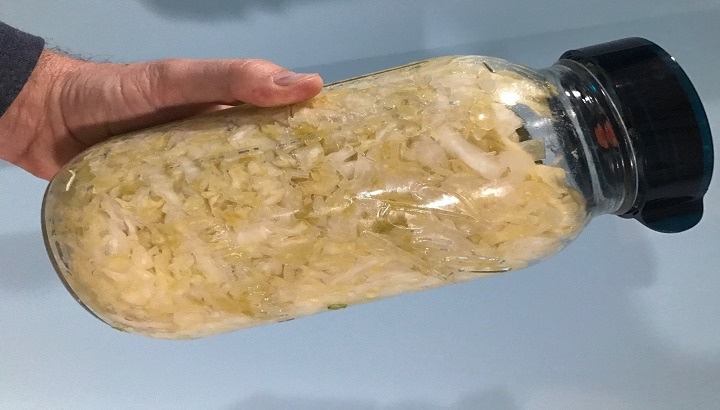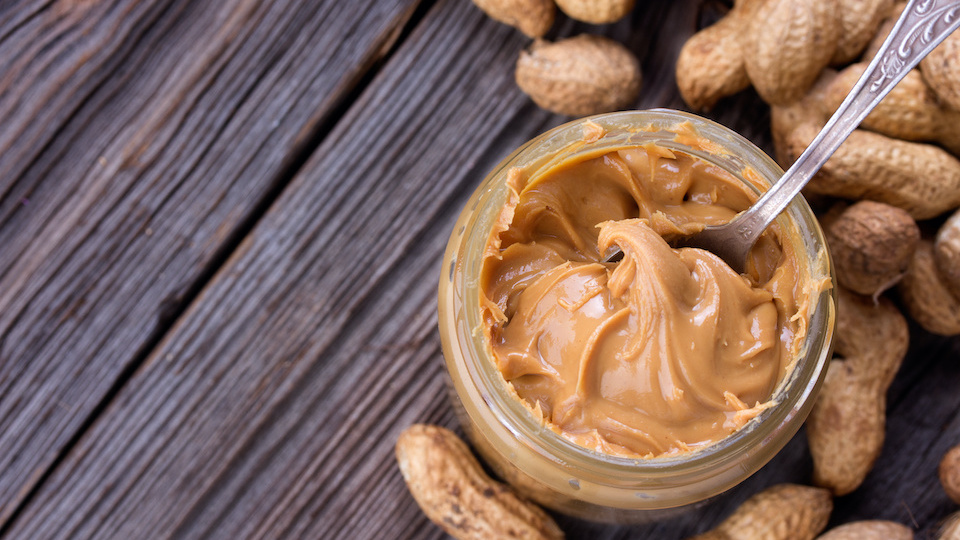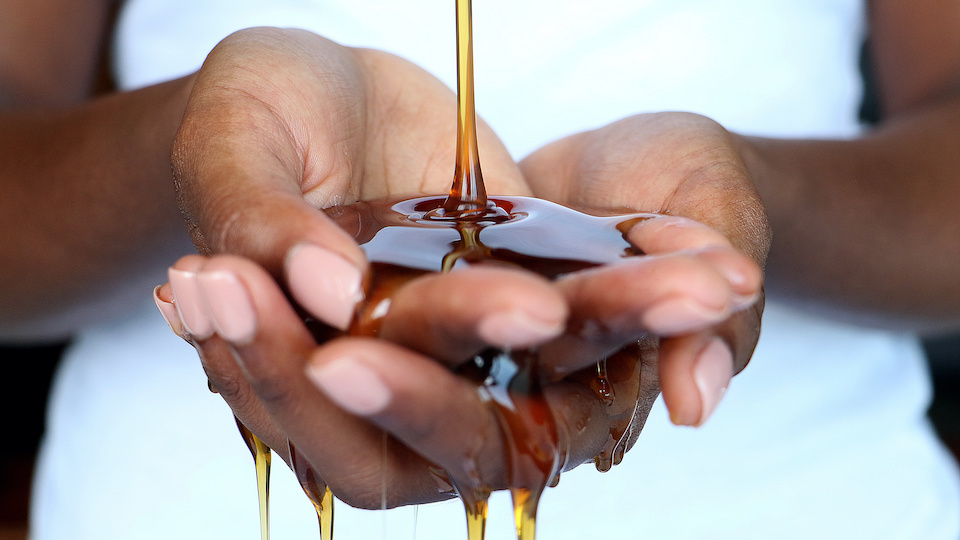For some people, the word “fermented” conjures up images of moldy food in the back of the fridge that you should’ve thrown away weeks ago. Although fermented food is indeed teeming with bacteria… they are the “good guys” and can do wonderful things for your health.
I have recently been experimenting with fermenting foods myself… and the results have been excellent so far. I currently have a batch of sauerkraut fermenting in my basement (as the photo above shows… it’s nearly complete!). The recipe couldn’t be any easier… just two ingredients: cabbage and salt. I’ve actually included my sauerkraut recipe at the end of this article as a bonus just for you.
Fermented foods have a long and rich history on our planet: people have been fermenting foods for thousands of years. The earliest record of fermenting foods dates back to about 6000 BC, and from that time forward, almost every culture on Earth has one or more staple fermented foods. Yogurt (fermented milk) is a worldwide favorite. So is sauerkraut (fermented cabbage). In Korea, the most popular is kimchi (a spicy version of sauerkraut with ginger and hot peppers). In Japan, natto (fermented soybeans) is ubiquitous. In West Africa, one noteworthy and popular food is garri (cassava root, which has to be fermented to remove natural poisons). The list goes on and on.
There are many reasons why fermentation has such a rich cultural significance all over the world. Fermentation is a great method of preservation… very important before the invention of refrigerators. It also helps to keep foodborne illnesses at bay. It tastes great and adds a unique component to a meal, and, perhaps most importantly, it has amazing benefits to your overall health. Using fermented foods for medicinal purposes dates back to ancient China and ancient Rome, and this is still very relevant today.
How could eating a fermented food be good for you? Well, 1) Vegetables are good for you, and fermenting vegetables is another way to get more of them onto your plate. 2) Fermentation is the result of the chemical breakdown of foods by the “probiotic” bacterium known as lactobacillus… also known as healthy gut bacteria. Consuming these live active cultures enhances the health of the ecosystem in your gastrointestinal tract. The following are just a few benefits of eating fermented foods:
– The probiotics in fermented foods can help ease gastrointestinal disorders, and promote healthy digestion.
– Eating probiotics promotes healthy fat loss.
– Since the health of your gut is intrinsically tied to the health of your immune system (much of your immunity is found in your gut), keeping your gut healthy strengthens your body’s immune system… and that’s huge.
Because of these important benefits, you definitely want to increase the amount of probiotic fermented foods in your diet. The following are some of the most popular types:
– Natural live culture plain yogurt
– Kefir
– Sauerkraut
– Kimchi
– Sour pickles
– Tempeh
– Natto
– Some cheeses, including gouda
One of my personal favorite fermented foods is sauerkraut, and now, as promised, please enjoy my recipe:
Dr. Josh’s Homemade Sauerkraut
Ingredients:
– One head of green cabbage (standard size)
– 1 to 1 ½ tablespoons of salt
Instructions:
– Shred the cabbage
– Pour the salt over the cabbage
– Wash your hands
– Massage the salt into the cabbage by squeezing it in your hands and pressing it into the sides of the bowl.
– Let sit for 30 to 60 minutes. The salt will cause the cabbage to release the water inside the leaves and you will notice a “brine” forming in the bottom of the bowl.
– When the cabbage is moist, put it in a clear jar or a ceramic crock (don’t use metal).
– Press the cabbage down below the level of the brine and make sure that all of it is submerged (this is critical).
– You can use a plastic bag filled with water or any other weighted object to keep the cabbage under the brine. Again: It is critical that the leaves stay submerged. Let the jar sit at room temperature for 7 to 30 days.
That’s it! Over the next 7 to 30 days, depending on temperature and other atmospheric conditions, lactobacillus bacteria will begin to grow. (The warmer it is, the faster it ferments.) The salt brine environment promotes the growth of the healthy bacteria and inhibits the growth of unwanted microorganisms. Taste your kraut every few days… you’ll know it’s ready when it tastes like… sauerkraut. Once it’s ready, move your jar into the fridge, and enjoy!
Enjoy,
– Dr. Joshua Levitt









